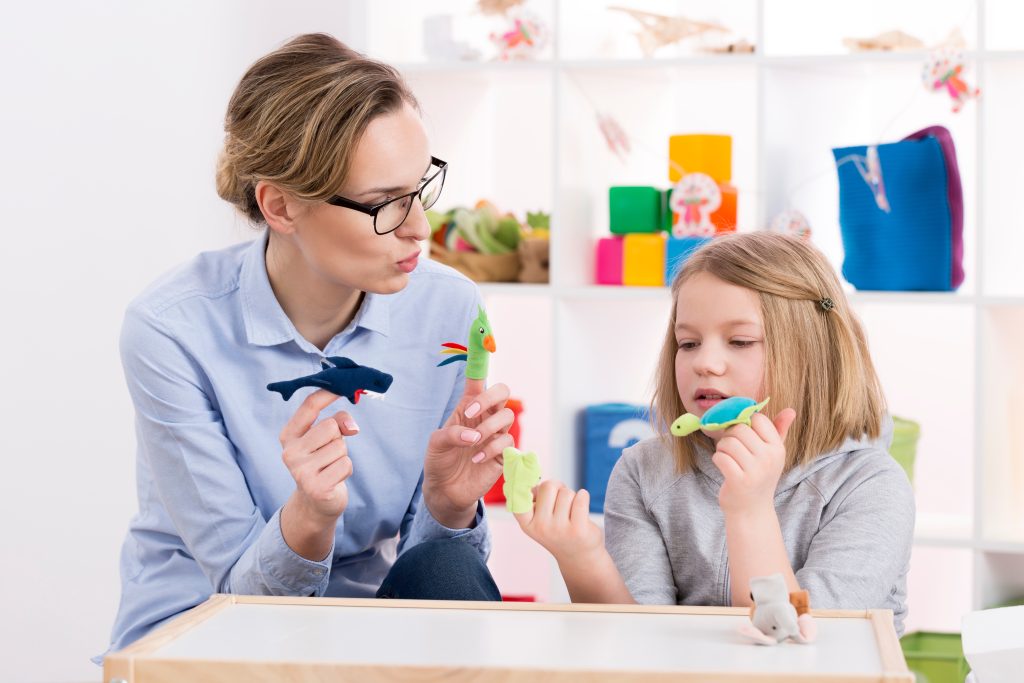Play Therapy Calgary: Healing Children Through Play with RMPS

Parenting can be one of life’s greatest joys—and one of its greatest challenges. Children often feel emotions they can’t yet name, display behaviors parents find confusing or concerning, or struggle through experiences too big for their understanding. When this happens, play therapy can be a powerful tool to help children heal, grow, and find their voices. In Calgary, Rocky Mountain Psychological Services (RMPS) offers play therapy services designed to support children aged about 3‑12 to navigate life’s difficulties in a safe, nurturing, and developmentally appropriate way.
What Is Play Therapy?
Play therapy is a therapeutic approach grounded in developmental psychology. It is built on the idea that play is a child’s language, and that symbolic expression through toys, stories, art, or imaginative play allows children to express thoughts and feelings which they might not be able to verbalize. RMPS describes play therapy as a process in which children choose objects, symbols, or modes of play to express their concerns and begin to work through challenges.
Rather than forcing children into purely verbal sessions, play therapy allows them to communicate and explore in a natural way—through art, play, storytelling, pretend play, drawing, role‑play, and sometimes sensory or expressive tools. The therapist’s role is to observe, gently guide when needed, and help the child make sense of the play, feelings, and experiences. This helps children regain emotional balance, develop coping skills, improve self‑esteem, and build resilience.
Why Play Therapy Matters in Calgary
Calgary is a dynamic, growing city. Families come from diverse backgrounds; children face stressors from school, family changes, social pressures, trauma, loss, or sometimes mental health issues like anxiety and emotional regulation challenges. Traditional counseling, while helpful, isn’t always enough for younger children who may struggle to express emotions verbally. Play therapy offers an alternative that is more aligned with how young children think and feel.
RMPS recognizes that many emotional, social, or behavioral problems manifest in ways children can’t yet articulate. For example:
- Anxiety or fear that shows up in tantrums, sleep disturbances, nightmares.
- Difficulty with emotional outbursts or aggression.
- Challenges adjusting to changes in family structure (divorce, new sibling, loss).
- Low self‑esteem, social withdrawal, difficulty making or maintaining friendships.
Because play therapy allows children a safe psychological distance from difficult feelings (they are playing rather than directly confronting), it can help them gradually process and integrate these experiences in a way that feels natural and less overwhelming.
How Play Therapy Works at RMPS
Understanding what happens in a play therapy program helps parents and guardians know what to expect. RMPS provides a structured but flexible model adapted to each child’s developmental and emotional needs. Here’s how their play therapy generally works.
Initial Assessment & Comfort Building
- When you first contact RMPS, there is typically an intake process: gathering background on the child, family situation, previous experiences, or stressors. This gives the therapist a picture of what the child may be struggling with.
- The therapist works to build trust. The playroom is made warm, welcoming, safe: equipped with toys, art supplies, sensory items. Children are encouraged to engage however they like—drawing, pretend play, storytelling, art, etc.
The Actual Sessions
- Sessions typically last 45‑60 minutes.
- The child uses play and creative methods to express themselves. The therapist observes patterns in the way the child plays—how they relate to certain toys, what themes emerge, what kinds of interactions they choose—and gently guides them.
- Sometimes there is a combination of play and talk therapy—verbal discussion may follow the play, especially as the child becomes more comfortable. This helps them understand their feelings, develop strategies for coping, problem‑solve, internalize skills.
Parent & Caregiver Involvement
- Parents are not observers only: RMPS encourages collaboration of parents or caregivers in the therapy process. This can include regular meetings to discuss progress, tips or strategies to support the child at home, behavior support outside therapy, and helping maintain continuity.
- Understanding by parents of how play therapy works is very helpful: knowing that children often express difficult emotions symbolically, not always verbally; that change may be gradual; and that behavioral changes at home will often mirror what happens in therapy.
Who Can Benefit From Play Therapy?
At RMPS, play therapy is ideally suited for children aged around 3 to 12 years.
Some of the situations or issues play therapy can help with include:
- Anxiety, fear, general worry
- Anger, emotional outbursts, aggressive behavior
- Sleep problems, nightmares, regression in behavior
- Loss, trauma, difficult life transitions
- Low confidence, social withdrawal
- Difficulties in focusing or following instructions, sometimes when verbal expression lags behind emotional or developmental processing.
Because children often show distress via their behavior or play rather than words, play therapy offers a meaningful way to access, address, and support healing. It helps them develop not only emotional regulation but problem‑solving skills, self‑understanding, communication, resilience.
What Parents & Guardians Should Know Before Trying Play Therapy
If you are considering play therapy for your child in Calgary, here are some key points to guide you in your decision:
- Therapist Qualifications
Ensure the therapist has specialized training or certification in play therapy (or expressive arts, child psychotherapy), especially in working with younger children. RMPS therapists are trained in play therapy and expressive‑arts methods. - Approach & Philosophy
Ask whether the style is more child‑led (non‑directive), or more directed (therapist leads some parts), or a mix. Some children benefit from structure, others benefit from the freedom to explore. RMPS seems to utilize a flexible approach, combining play and expressive arts and parent involvement. - Duration and Consistency
Play therapy is not usually a one‑or two‑session fix. Depending on the child’s issues, improvement may come more gradually. Regular sessions over weeks or months help build trust and allow changes to take root. - Environment
The space used for therapy should feel safe, friendly, non‑threatening: age‑appropriate toys, art materials, creative tools. RMPS offers such environments designed for comfort and expression. - Parental Role
Your involvement matters. Being informed about what happens in sessions, supporting your child outside of therapy, helping implement strategies at home, being patient with progress—these all enhance outcomes. Also, being involved in discussions with the therapy team helps align expectations. - Goals and Monitoring Progress
From the start, it’s good to establish what goals you have: fewer tantrums? Better emotional regulation? Improved sleep or less anxiety? Ensuring these are regularly revisited helps you see whether therapy is helping and whether adjustments are needed.
Why RMPS Is a Strong Choice for Play Therapy in Calgary
Based on what’s available on their site, RMPS has many strengths:
- Experienced Staff: The clinic has several therapists trained in play‑based, expressive arts, developmental psychology, trauma‑informed care. The directors and staff (such as Cassandra White, Tammy Thomson) bring decades of experience.
- Range of Modalities: RMPS doesn’t simply use a one‑size‑fits‑all approach. They integrate multiple methods (play, art, expressive interventions) to meet children where they are.
- Child‑centred, Safe Environment: Their playrooms are designed to be welcoming, filled with toys, art supplies, sensory items—everything to help a child feel at ease to express and explore.
- Parental Involvement & Collaboration: Parents are part of the process. RMPS schedules meetings, provides feedback, and guidance so what happens in therapy translates to home and school.
- Flexible, Tailored Approach: They recognize variation in needs, speed, expression styles. Some children may quickly benefit, others need longer durations. They aim to adapt based on progress.
What Results Can You Expect?
While every child is unique, families who use play therapy often see the following kinds of improvements over time:
- Improved emotional regulation: fewer outbursts, better ability to calm when upset
- Increased ability to express feelings, even when hard to put into words
- More confidence, improved self‑esteem, feeling more in control
- Better relationships: with peers, parents, siblings
- Reduction in symptoms like anxiety, nightmares, sleep issues, withdrawal
- Improved coping strategies: when stressful events arise, children have tools to process rather than react impulsively
These gains often ripple beyond the therapy room. A child who feels more understood and emotionally safe tends to do better in school, in friendships, and in navigating life’s transitions.
How to Begin Play Therapy with RMPS
If you believe play therapy might help your child, here are steps to get started in Calgary with RMPS or similar providers:
- Make Contact / Intake
Reach out to RMPS to explain your concerns. They have an intake process where you share background about the child’s history, current stressors or symptoms. - Agree on Goals
Together with the therapist, set some initial goals—both large and small. For example: reduce nightly tantrums, improve sleep, increase social engagement. - Schedule Regular Sessions
Plan for consistency. Decide how often sessions will happen. Frequent sessions help build momentum and trust. - Parental Collaboration
Parents / caregivers should plan to meet with the therapist, follow suggestions, implement strategies at home, provide feedback. - Monitor & Adjust
Periodically assess progress: are behaviors improving? Does your child seem more comfortable? Do adjustments or changes (e.g. frequency, types of play, extra supports) need to be made? - Be Patient
Change doesn’t always happen overnight. Sometimes progress appears slow, then suddenly you see leaps forward. Being patient and supporting the child’s development is very important.
Conclusion
Play therapy is a meaningful, effective, and developmentally sensitive method for helping young children in Calgary work through emotional, behavioral, or traumatic challenges. At Rocky Mountain Psychological Services, children aged 3‑12 have access to caring, skilled therapists, safe and welcoming spaces, and therapy approaches that respect their pace and natural modes of expression.
If your child is showing signs of emotional distress, behavioral struggles, or difficulty navigating life changes, play therapy in Calgary may provide the healing, understanding, and resilience they need. RMPS stands out as a trusted option to guide them on that journey.



